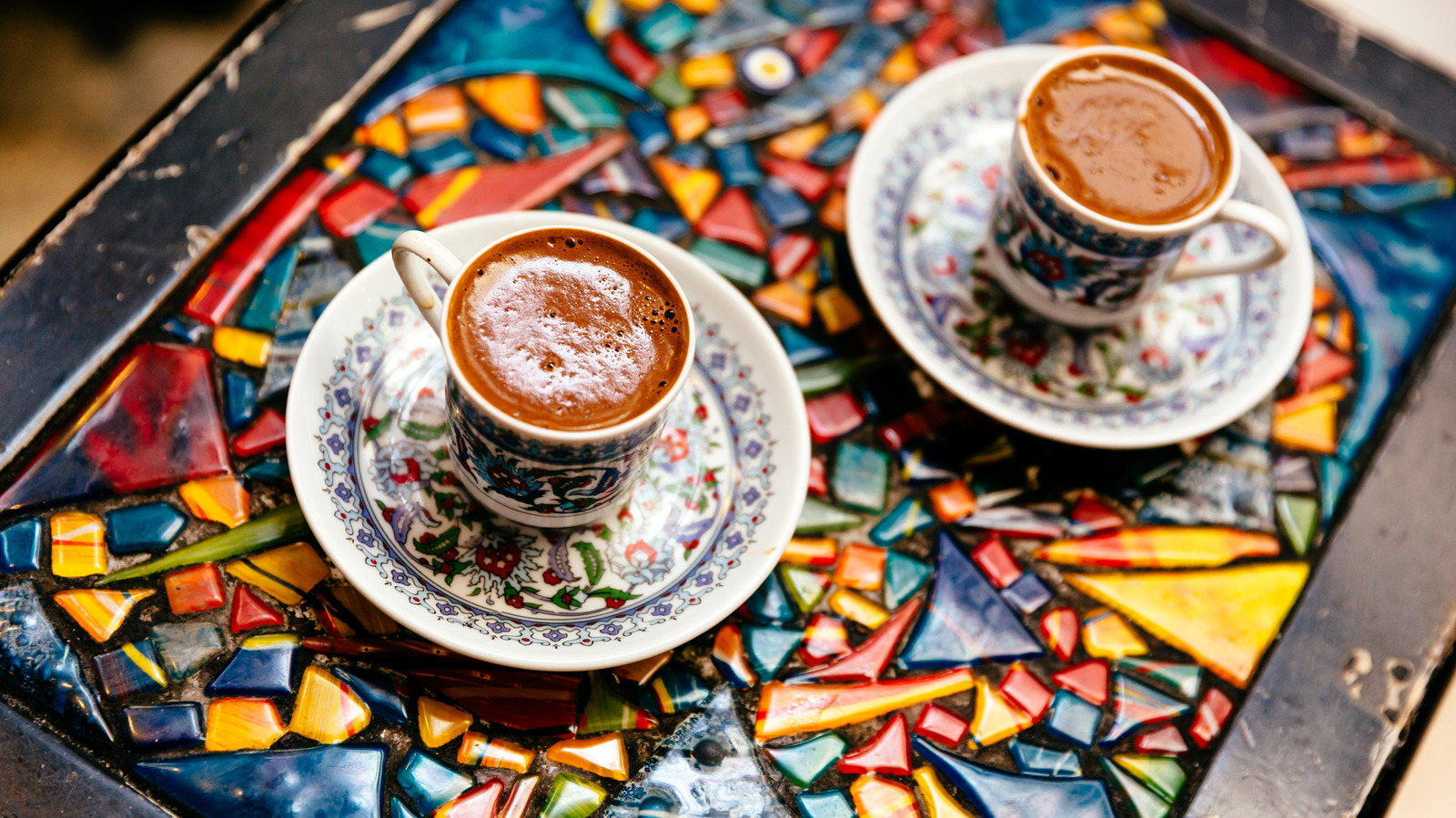A lot goes into your daily cup of coffee. Beyond a caffeine boost, that cuppa joe can also help foodies explore their own thoughts and emotions with symbolic insights. Introducing: Turkish coffee readings. The practice traces back to the 1500s Ottoman Empire, and long before that, folks in ancient China have been reading tea leaves to glean information about the future since the Tang Dynasty (618-907 C.E.).
Turkish coffee (which is sometimes heated with hot sand) is made to be sipped and savored, a moment of pausing and slowing down. To brew it, ultra-fine grounds are steeped in hot water without being filtered out. There’s also an ideal water-to-coffee ratio for brewing a knockout cup of Turkish coffee, by the way. As people sip, those coffee grounds sink to the bottom of the cup, leaving behind a sludge of leftover sediment. Tasseography (or “Fal bakma” in Turkish) is the centuries-old practice of reading those remnant grounds as a method of predicting the future.
It’s a tradition steeped in mysticism, but also a fun social ritual that brings people closer together, providing an opportunity for folks to open up about their lives and personal aspirations, broaching casual small talk. In this way, tasseography is an extension of Turkish coffee’s intended enjoyment — slowly, intentionally, and in good company. Alternatively, some folks use tasseography in a totally non-divination way, instead creating playful group stories based on images that seem to appear in the sediment for entertainment and social bonding.
Tasseography encourages slowing down for symbolic introspection and social closeness
To read Turkish coffee grounds, the sipper holds the sludge-filled cup in their dominant hand and makes a wish. This can also be described as setting an intention for their reading. Then, they place a saucer over the cup and quickly flip the cup upside-down, causing the heavier grounds to slide out onto the saucer and leaving a sludgy pattern behind in the cup. The cup must remain upside down for five to 10 minutes to give the grounds time to settle and cool.
The patterns left behind on the sides of the cup are thought to represent near-future themes, and the patterns at the cup’s bottom are thought to represent past events. Common tasseography symbols include animals (birds indicate good news or travel), flowers (rose for love, sunflower for joy), numbers (three indicates growth, seven indicates awakening), natural elements (fire for new passion, mountain for obstacle), and shapes (triangles mean change and circles signify the end of a cycle or journey).
A second person (the fortune-teller) then interprets that pattern, looking for certain symbols or shapes and associating meaning with them. Readers must be familiar with the meaning of numerous tasseography symbols in order to perform the job. The cup might also be turned to observe any existing images from a different angle. For both the sipper and the reader, taking a closer look at those grounds encourages reflection and pause in the midst of a fast-moving world.






